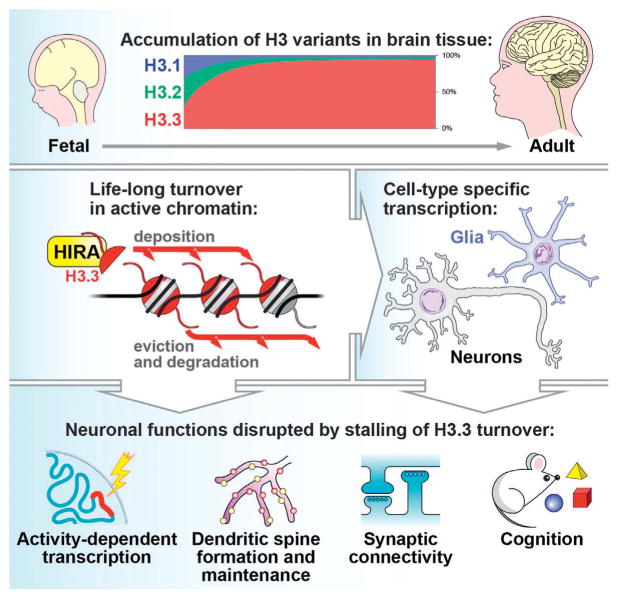Figure 2.
Roles for H3.3 turnover in brain. Top: H3.3 accumulates with age in brain tissue, with levels reaching >90% of the total H3 pool in neuronal chromatin during mid-adolescence. Middle: H3.3 containing nucleosomes are deposited by HIRA and removed in a proteasomal-dependent manner to promote cell-type specific transcriptional responses in brain. Bottom: Reducing H3.3 turnover in neurons disrupts transcription of activity-dependent “late response” synaptic genes, decreases dendritic spines, reduces both excitatory (glutamatergic) and inhibitory (GABAergic) synapses, and impairs cognition.

